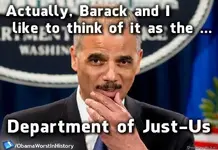Recounts on electronic voting machines are useless.... We need to go back to paper ballots.
Stephen H. Unger, PhD, Professor Emeritus of Computer Science and Electrical Engineering at Columbia University, in an Oct. 6, 2008 "Ends and Means" blog article titled "Forward to the Past: Junk the Machines, Count Votes Manually," wrote:
"The first issue is, what exactly would be recounted? Clearly a second summation of machine outputs would be meaningless. We would need some record of voter-intent independent of the machines. The obvious source would be paper ballots marked by voters, which could then be hand-counted. Paper ballots printed by DRE (touch-screen) machines will not suffice, since it is well known that most voters do not actually verify the correctness of such printouts. (It is also possible for a machine to void a voter-approved ballot and to substitute a different one after the voter leaves the booth.) So meaningful recounts are possible only for OS (optical scan) systems, which process voter-marked ballots, but not for the substantial percentage of US votes now cast on DRE machines, with or without printers."
Oct. 6, 2008 - Stephen H. Unger, PhD*
Ellen Theisen, MA, CEO of the Vote-PAD Company, wrote in her 2005 report "Myth Breakers: Facts About Electronic Elections":
"While HAVA requires that all voting systems produce a paper record in order to provide a manual audit capacity, the paper record of a DRE is interpreted by voting machine vendors and some election officials to refer to an end-of-day printout of either the totals or the ballot images...
Computer experts point out that if a DRE makes errors in recording or storing votes, its end-of-day printouts will be incorrect and no meaningful audit can be done. When a machine produces results a second time, it's merely a reprint, not a recount."
2005 - Ellen Theisen, MA*
Doug Jones, PhD, Associate Professor of Computer Science at the University of Iowa, in "The Evaluation of Voting Technology," a chapter in the book Secure Electronic Voting, 2003, wrote:
"For over a decade, all direct-recording electronic machines have been required to contain redundant storage, but this redundant storage is not an independent record of the votes, because it is created by the same software that created the original record. As a result, recounts are of limited use with these machines."
2003 - Douglas W. Jones, PhD*
Matt Blaze, PhD, Associate Professor of Computer and Information Science at the University of Pennsylvania, et. al, in a paper presented at the USENIX/ACCURATE Electronic Voting Technology Workshop on July 29, 2008 titled "Security Evaluation of ES&S Voting Machines and Election Management System," wrote:
"The normal access provided to individual precinct poll workers (and in some cases to voters themselves) is sufficient to conduct attacks that alter county-wide election results and that, in some cases, cannot be detected or recovered from through audits or recounts... the DRE system provides more vectors for attacks that cannot be recovered from through manual recounts."
July 29, 2008 - Matt Blaze, PhD*
Verified Voting Foundation, a publicly verifiable elections advocacy group, in a Jan. 30, 2005 website article titled "Summary of the Problem with Electronic Voting," offered the following:
"Without voter-verified paper records that accurately reflect the voters’ choices, it is simply impossible to perform a meaningful recount. While most DRE voting machines can print a paper record of the votes cast, this report is not generated until after the polls have closed, and is nothing more than a printout of the electronic records. If the electronic record is inaccurate, then the printed report will also be inaccurate. Such a printout is not voter-verified and does not provide an audit trail appropriate for a meaningful recount."
Jan. 30, 2005 - Verified Voting Foundation*
A Center for Correct, Usable, Reliable, Auditable and Transparent Elections (ACCURATE) submitted its "Public Comment on the 2005 Voluntary Voting System Guidelines" to the U.S. Election Assistance Commission on Sep. 30, 2005, which stated:
"In today's purely electronic systems, there is no 'fixed record' for voters to review, or for officials to review as a check against the system or in the case of a recount. If votes were incorrectly recorded by the system there is no possibility of a meaningful recount."
Sep. 30, 2005 - A Center for Correct, Usable, Reliable, Auditable and Transparent Elections (ACCURATE)*
Sent from my Galaxy Nexus using Tapatalk 2





 Wasn't she the individual who started the whole Bengazhi problem with her Sunday morning miss-leading statements? But she certainly is being rewarded for how she takes orders, and not for what she knows to be true!
Wasn't she the individual who started the whole Bengazhi problem with her Sunday morning miss-leading statements? But she certainly is being rewarded for how she takes orders, and not for what she knows to be true!